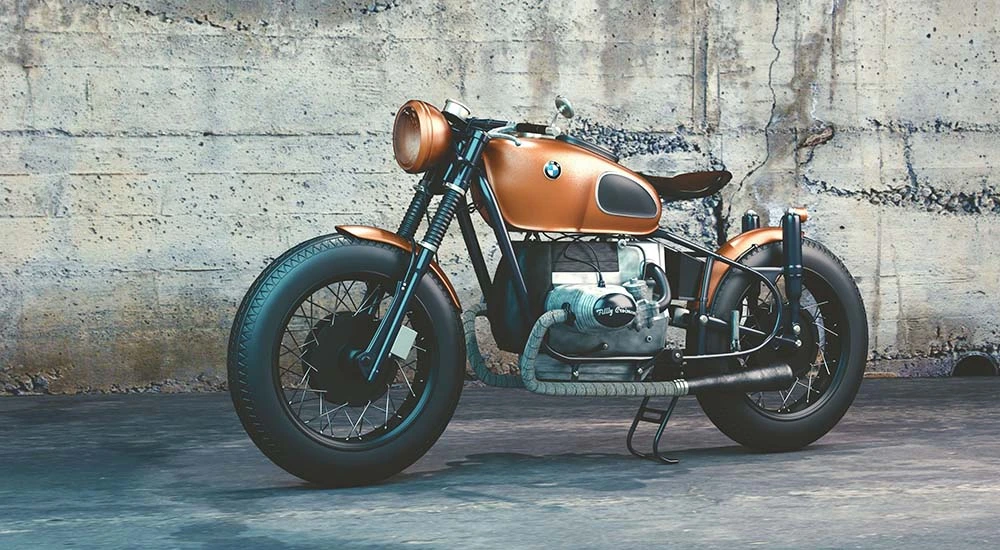Generally speaking, the more a motorcycle weighs, the more powerful it is and the higher its top speed will be.
However, this is not always the case. Some lightweight motorcycles are just as powerful as their heavyweight counterparts. It all depends on the design of the motorcycle.
When it comes to performance, handling, and fuel economy, weight is just one of many factors that come into play.
Other important factors include the bike’s power-to-weight ratio, suspension, tires, and aerodynamics. So, if you’re wondering how much your motorcycle weighs.
Here is the answer…
Table of Contents
The average weight of a motorcycle

Some motorcycles can weigh up to 1,000 pounds or more. The weight of a motorcycle can affect how it performs and how well it handles it.
Heavier motorcycles may be more difficult to control and may require more fuel to operate. Lighter motorcycles may be easier to control and may get better gas mileage.
What Weight is Considered to be a Heavy Motorcycle?
A motorcycle that weighs more than 850 pounds (386 kg) is considered to be a heavyweight motorcycle.
Some of the most popular heavyweight motorcycles include the Harley-Davidson Fat Boy, the Honda Gold Wing, and the Yamaha Royal Star Venture.
These bikes are known for their powerful engines and comfortable riding positions.
What Weight is Considered to be a Light Motorcycle?
Supposed to be, some people consider any motorcycle that weighs more than 500 pounds (227 kg) to be a heavyweight bike.
Others believe that anything over 700 pounds (317 kg) is considered heavy.
Ultimately, it’s up to the rider to decide what weight is considered to be heavy.
What Factors Affect How Much a Motorcycle Weighs?
There are a few factors that can affect the weight of a motorcycle. These include the type of bike, the materials used in its construction, and the size of the engine.
Heavier bikes tend to be more powerful and have higher top speeds, but they may also be more difficult to control and may require more fuel to operate.
Lighter bikes may be easier to control and may get better gas mileage, but they may not be as powerful as their heavyweight counterparts.
The benefits of reducing motorcycle weight
There are several benefits to reducing the weight of your motorcycle. Lighter bikes are easier to control, which can help you avoid accidents.
They also tend to get better gas mileage, so you’ll save money on fuel costs. And finally, lighter bikes are often more nimble and responsive, making them more fun to ride.
If you’re looking to reduce the weight of your motorcycle.
How to reduce motorcycle weight?
If you’re looking to reduce the weight of your motorcycle, there are a few things you can do.
First, you can choose a lighter bike. Some manufacturers offer lightweight versions of their bikes that are made with lighter materials and have smaller engines.
You can also remove any unnecessary accessories from your bikes, such as mirrors, lights, and luggage racks.
Finally, you can make sure your bike is properly tuned and that the tires are inflated to the proper pressure. These simple steps can help reduce weight.
Motorcycle weight limit laws by state

There are a few states that have motorcycle weight limit laws. In California, the maximum gross vehicle weight for a motorcycle is 1,500 pounds.
This means that the bike itself can weigh no more than 1,500 pounds, including fluids and accessories. In Florida, the maximum gross vehicle weight for a motorcycle is 1,700 pounds.
And in Texas, the maximum gross vehicle weight for a motorcycle is 2,000 pounds. These laws are in place to help ensure that motorcycles are safe for both riders and other motorists on the road.
The weight of motorcycles by category is as follows:
Scooters weigh about 150 to 300 pounds.
Scooters weigh 150 to 300 pounds, making them significantly lighter than motorcycles. This makes them more manageable for smaller riders and can be a plus when in tight spaces. However, the lower weight also means they may not be able to handle as much power or travel as far as a heavier motorcycle.
Mopeds range from about 100 to 200 pounds.
Mopeds are even lighter than scooters, at around 100 to 200 pounds. This makes them even easier to maneuver, but they may not be able to go as fast or travel as far as a heavier bike.
Like scooters, mopeds typically have a small engine displacement and are designed for short trips around town. an easy-to-ride bike for errands or commuting, a moped may be a good choice.
Just be aware that you may have to pedal uphill or into a headwind,
Cafe racers and scrambles typically weigh about 350 to 450 lbs.
Cafe racers and scramblers are similar to standard motorcycles in terms of weight, at around 350 to 450 pounds.
These bikes are designed for agility and speed, and typically have smaller engines than other types. that’s easy to handle but still has some power.
Cruisers typically weigh between 500 and 700 pounds.
Cruisers are generally larger and heavier than other types of motorcycles, weighing between 500 and 700 pounds.
This extra weight can give cruisers more stability on the road, sometimes it also makes them more difficult.
Cruisers typically have larger engines which give them more power but also make them less fuel-efficient.
Sport bikes typically weigh between 375 and 550 pounds.
Sport bikes are designed for speed and agility, and weigh between 375 and 550 pounds. but they make up for it with lightweight and sharp handling.
If you prefer a motorcycle that’s fast and fun to ride, a sport bike may be a good option.
Just be aware that these bikes can be less comfortable than other types of motorcycles, and they may not be as well-suited for long destinations.
Touring bikes typically weigh between 500 and 850 pounds.
Touring bikes are designed for comfort and long-distance riding, and weigh between 500 and 850 pounds.
These bikes have larger engines which gives them more power and makes them more fuel-efficient and can handle long rides, these bikes can be difficult to drive in tight spaces, and they may not be as much fun.
Dirt bikes typically weigh between 250 and 350 pounds.
Dirt bikes are designed for off-road riding, and there weigh between 250 and 350 pounds.
These bikes have small engines and are lightweight, but they may not be as powerful as’s fun to ride on trails or in the mud, a dirt bike may be a good option.
Just be aware that these bikes can be difficult to ride on the street, and they may not be well-suited for long-distance.
Full-dressed baggers weigh from 700 to 900 lbs
Full-dressed baggers are motorcycles that have been outfitted with saddlebags and other accessories for long-distance riding.
These bikes typically weigh from 700 to 900 pounds, which makes them among the heaviest types of motorcycles.
If you’re looking for a motorcycle that’s comfortable for long rides and can carry all your gear.
Dual Sport Motorcycle Weight
The average weight of a dual sport motorcycle is going to be around 400 to 500 pounds. This is the average weight of the bike without any gear or accessories.
The weight will increase when you add gear, a passenger, and luggage. The extra weight will affect the performance of the motorcycle.
Heavier bikes will have more difficulty accelerating and may not handle as well in the turns. Lighter bikes will be easier to control and may get better gas mileage.
Weight-saving tips for new and experienced riders alike
Most motorcycle manufacturers specify the dry weight of their bikes, which does not include fluids or accessories such as mirrors, lights, and luggage.
The curb weight of a motorcycle includes all these items and is therefore usually heavier than the dry weight.
There are a few things riders can do to reduce the weight of their motorcycles.
For new riders, choosing a lighter bike may be the best option. For experienced riders, removing unnecessary items from the bike and regularly maintaining the bike can help keep it light.
Reducing the weight of your motorcycle can improve its performance and fuel economy. It may also make it easier to control, especially for new or inexperienced riders.
If you are unsure about how to safely reduce the weight of your motorcycle, consult a qualified mechanic or dealer.
Final thoughts on the importance of motorcycle weight reduction
The weight of a motorcycle can have a significant impact on its performance, handling, and fuel economy.
Heavier motorcycles may be more difficult to control and may require more fuel to operate. Lighter motorcycles may be easier to control and may get better gas mileage.
Most motorcycle manufacturers specify the dry weight of their bikes, which does not include fluids or accessories such as mirrors, lights, and luggage.
The curb weight of a motorcycle includes all these items and is therefore usually heavier than the dry weight.
Reducing the weight of your motorcycle can improve its performance and fuel economy. It may also make it easier to control, especially for new or inexperienced riders.
There are several factors that can affect how much a motorcycle weighs. For example, the type of motorcycle, the size of the engine, and the materials used in construction can all play a role.
Conclusion
Now that you know the typical weight ranges for different types of motorcycles, you can narrow down your search to find the perfect bike for you.
Just remember that the weight of a motorcycle is just one factor to consider when choosing the right bike for you.
Be sure to also take into account the bike’s engine size, power, and handling before making your final decision.

